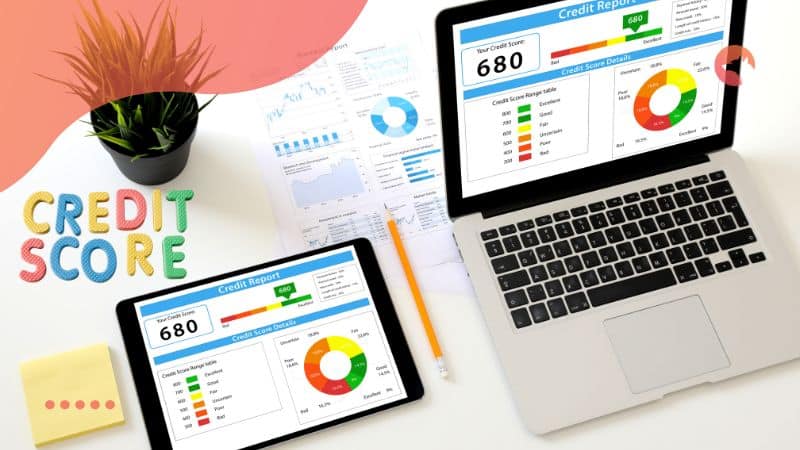What is a good credit score? Find out the best credit score range and how to improve your rating for better financial opportunities!
When it comes to personal finance, one of the most important numbers you will ever encounter is your credit score. It is a key indicator of your financial health and can have a significant impact on your ability to secure loans, mortgages, and even rental agreements.
In this comprehensive article, we will delve into the fundamentals of credit scores, explore what What is a good credit score truly means, and provide actionable tips to help you achieve and maintain an excellent score.
What is a Credit Score?

A credit score is a numerical representation of your creditworthiness. Essentially, it reflects your ability to manage debt and repay borrowed money. Lenders use this score to determine how likely you are to repay your loans on time. Credit scores are calculated using a variety of factors, including your payment history, the amount of debt you owe, the length of your credit history, new credit inquiries, and the mix of credit types in your profile.
A good credit score typically falls between 670 and 850, helping you secure better loan terms, lower interest rates, and financial opportunities. However, if your score is lower, don’t worry there are simple ways to how to Improve Credit Score for Free, like paying bills on time, reducing credit utilization, and checking your credit report for errors. By taking these steps consistently, you can boost your score and achieve greater financial stability.
Key Components of a Credit Score
- Payment History: This is the most significant factor and indicates whether you have paid your bills on time.
- Amounts Owed: This refers to your total debt and how much of your available credit you are using.
- Length of Credit History: This considers how long your credit accounts have been active.
- New Credit: This involves the number of recently opened accounts and recent credit inquiries.
- Credit Mix: This looks at the diversity of your credit accounts, such as credit cards, mortgages, and personal loans.
Each of these components plays a crucial role in shaping your overall score. Consequently, understanding and managing each element is essential for achieving a healthy financial profile.
What Is A Good Credit Score? Defining a Good Credit Score

Now that you understand what a credit score is, the next logical question is: What is a good credit score? Although definitions may vary slightly between different scoring models, here are some general guidelines:
- Excellent (800-850): Individuals with scores in this range are considered extremely reliable and usually receive the best interest rates on loans.
- Very Good (740-799): Scores in this bracket indicate strong creditworthiness. Borrowers in this range typically secure favorable loan terms.
- Good (670-739): A score in this category is viewed as acceptable by most lenders, though interest rates might not be as low as those offered to individuals in the very good or excellent ranges.
- Fair (580-669): Borrowers with scores in this range may find it challenging to obtain credit, and if they do, the interest rates are likely to be higher.
- Poor (300-579): Scores in this bracket indicate high risk, and obtaining credit can be very difficult without significant improvements.
It is important to note that while these ranges are generally accepted, different lenders and financial institutions might have their own criteria for what they consider to be a “good” credit score. However, consistently aiming for a score in the “Good” to “Excellent” range will open doors to better financial opportunities.
The Importance of a Good Credit Score
There are several reasons why maintaining a good credit score is paramount:
1. Lower Interest Rates, What Is A Good Credit Score
When you have a high credit score, lenders view you as a less risky borrower. Consequently, you are more likely to qualify for loans with lower interest rates, saving you money in the long term. For example, when you secure a mortgage or an auto loan, even a slight reduction in the interest rate can lead to substantial savings over the life of the loan.
2. Increased Loan Approval Chances
A strong credit score makes you a more attractive candidate to lenders. This increases your chances of being approved for loans, credit cards, and rental agreements. Moreover, a good score can help you avoid the need for co-signers or additional security deposits, simplifying the borrowing process.
3. Better Terms and Conditions
Lenders often provide better terms, such as higher credit limits and longer repayment periods, to those with higher credit scores. This financial flexibility can be crucial during unexpected economic hardships, as it offers a safety net in times of need.
4. Enhanced Negotiating Power
With a robust credit score, you are in a stronger position to negotiate with lenders. Whether it is a request for a lower interest rate or a change in the repayment schedule, your strong credit history gives you the leverage needed to secure more favorable terms.
Tips for Achieving and Maintaining a What Is A Good Credit Score
Achieving a good credit score does not happen overnight. It requires discipline, planning, and a consistent approach to financial management. Below are some actionable tips to help you along the way:
1. Always Pay Your Bills on Time
Undoubtedly, your payment history is the single most important factor in determining your credit score. Missing payments, even occasionally, can have a negative impact. Therefore, it is crucial to pay your bills on time every month. To ensure you never miss a payment, consider setting up automatic payments or reminders on your phone.
2. Keep Your Credit Utilization Low
Credit utilization refers to the ratio of your current credit card balances to your total credit limits. Financial experts recommend keeping this ratio below 30%. By doing so, you demonstrate to lenders that you are not overextending yourself financially. Moreover, regularly paying off your balances can help maintain a low credit utilization rate.
3. Monitor Your Credit Reports Regularly
It is vital to check your credit reports from the major credit bureaus at least once a year. Monitoring your reports helps you spot any errors or fraudulent activities that could potentially lower your score. If you find any discrepancies, be sure to dispute them immediately with the respective bureau.
4. Build a Diverse Credit Portfolio
Lenders like to see a mix of different types of credit, such as credit cards, installment loans, and mortgages. By diversifying your credit portfolio, you can demonstrate your ability to manage various forms of credit responsibly. However, it is important not to take on more debt than you can handle.
A great way to begin understanding how credit scores are evaluated is to visit MyFICO, which thoroughly explains how scores are classified and provides tools for tracking your score over time.
Conclusion What Is A Good Credit Score
Understanding your credit score is essential for achieving financial success. By asking the crucial question, What is a good credit score, you open the door to better financial opportunities, including lower interest rates, increased loan approvals, and improved negotiating power. As you have learned throughout this article, maintaining a good credit score requires consistent effort, smart financial habits, and a proactive approach to managing your credit history.
In summary, focus on paying bills on time, keeping your credit utilization low, monitoring your credit reports, and maintaining a diverse credit portfolio. Additionally, debunking common myths and staying informed about economic trends can further enhance your financial well-being. Ultimately, by taking these strategic steps, you not only improve your credit score but also pave the way for a more secure financial future.



